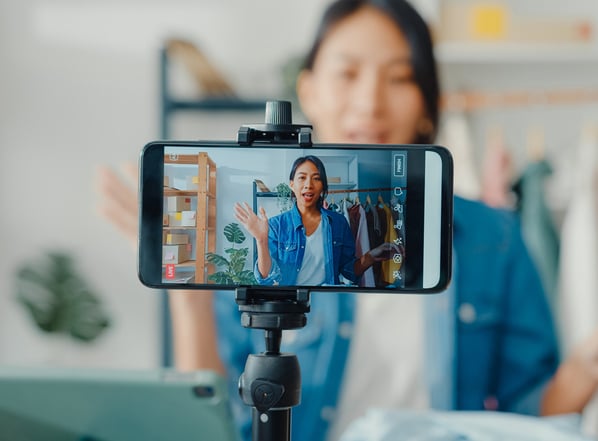There are millions upon millions of blog posts published every single day. That’s been true for a few years now.

And these numbers continue to grow exponentially with the increase in new online sites all competing for the same precious site visits especially when the benefits of organic traffic has become more and more of common knowledge for online marketing.
In turn, content marketing in the form of blogging has become the norm for driving organic, inbound traffic.
Want better search engine optimization? More organic traffic?
Blogging is what most people will recommend. But it’s steadily become one of the most saturated marketing tactics you can use.
How can you expect to compete with thousands of other sites who have already been blogging for years?
It's a real challenge. Especially when they’re writing longer, higher-quality posts with more backlinks and higher rankings.
Thankfully, there's an alternative emerging.
Right now, content creation is moving towards video-based mediums. Even for landing pages, videos have shown to convert better than text. So why isn't every single business abandoning their blog in favor of a video first strategy?
The biggest barrier? Videos have a reputation as an inaccessible marketing tactic, especially for businesses on the smaller side. And while it is partly true that videos are usually more time-consuming and more expensive to create than text-based content, smaller businesses can still have success investing in the tactic.
You Need Video
Video is dominating online traffic. In fact, it’s predicted to take over the internet in the next few years. Cisco estimates that video traffic will account for 82% of all global internet traffic by 2021.
The majority of internet traffic is already video based. And that number is only going to increase. Why? People haven't stopped reading text-based content, but it's getting harder to capture and keep their attention.
55% of all pageviews online get less than 15 seconds of attention. Even in an old 2008 study from Nielsen Norman Group, we were seeing the beginning of this trend. That study found that visitors on average only read 20% of a given page online. Meaning 80% of the text and content on your page isn’t even being seen or read by real people.
In a recent study, CoSchedule analyzed their blog pages with heat and scroll maps to detect how people interacted with their page. They found that most readers only read the top 20-30% of their content.
The scariest finding? Only 10% of users who landed on a given post read to the bottom.
People want information immediately.
They don’t always want to read a 5,000-word blog post to get their information. They don’t want to read a long-form sales page to know how the product will improve their lives.
This trend is becoming more apparent in digital marketing as more and more companies are focused on implementing video-based content distribution:
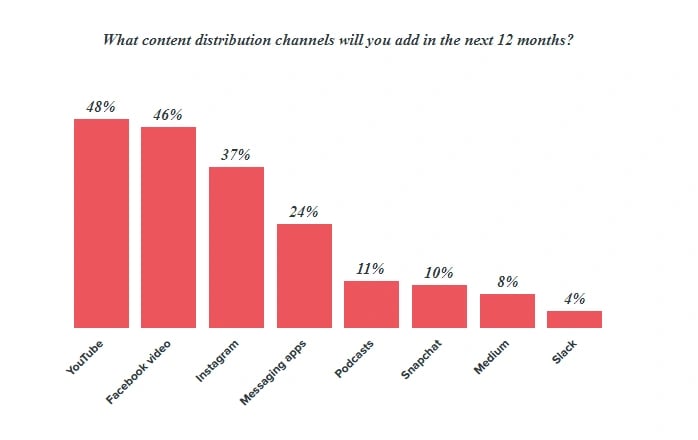
YouTube and Facebook Video are slowly taking over the content scene online.
As blogging becomes more saturated and user behavior shifts towards video-based traffic, it’s no wonder why these platforms are gaining traction.
Currently, Facebook has over two billion monthly active users, and YouTube is just behind it at 1.5 billion monthly users.
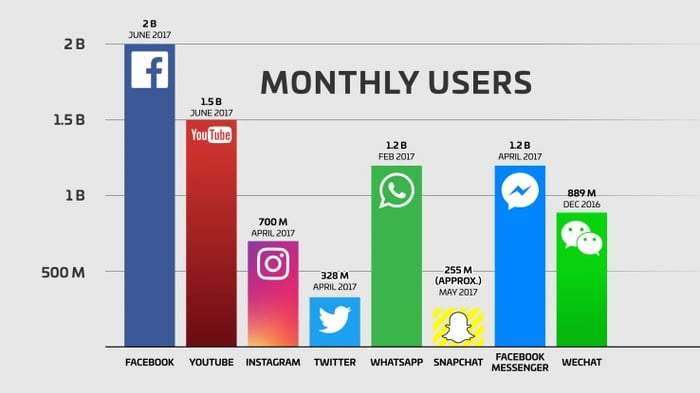
Currently, YouTube boasts nearly two billion monthly users who watch more than an hour of video content daily, on average. Facebook video posts aren’t far behind, either. The total amount of videos on Facebook has increased by 94% annually from 2014 to 2015. In November of 2015, Facebook hit over 8 billion daily video views, doubling the video traffic in less than a year.
The savvy brands who have jumped on this trend are already seeing the benefits of early adoption.
For example, 3D printer ecommerce brand Robo took advantage of this trend and generated $4.7 million in revenue running video ads on Youtube and Facebook.
Video-based content is the present and the future (as we know it). It’s gaining steam, and it’s only poised to gain even more traction as the years progress.
Video content is going to be necessary when it comes to driving more traffic and sales.
The Key Elements of a High-Converting Video
Not all video content converts. You can’t just throw up a random video on your landing page and expect it to increase conversions.
Here we’re going to look at a few of the most important elements of a converting video and companies have used them to drive more sales.
Keep it short and sweet.
This is perhaps the most important element in driving conversions with video-based content. As we went over earlier, studies are showing that people are growing more impatient when it comes to online content.
Very few people want to read a 20-minute blog post anymore.
We are reading less than ever before because it’s too time-consuming. We all want answers now. ASAP. Yesterday.
And to keep up with that, we can’t simply replace a blog post or a long-form landing page with a 10-minute video. Nobody will stick around to watch the whole thing.
According to a 2016 study by Wistia, as video length increases, you see big drops in engagement levels.
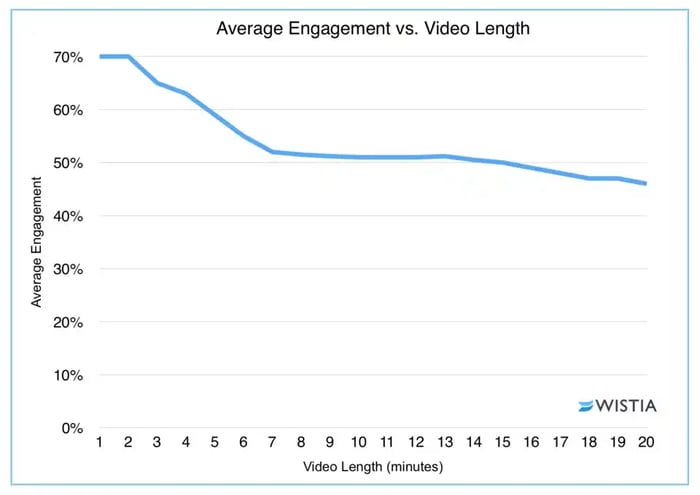
One to two minutes is shown to be the golden rule of online video content according to this Wistia study. They analyzed 564,710 videos and more than 1.3 billion video views to compile this data.
When you look closely at the graph, you can see that there is a sharp drop-off after two minutes in length:
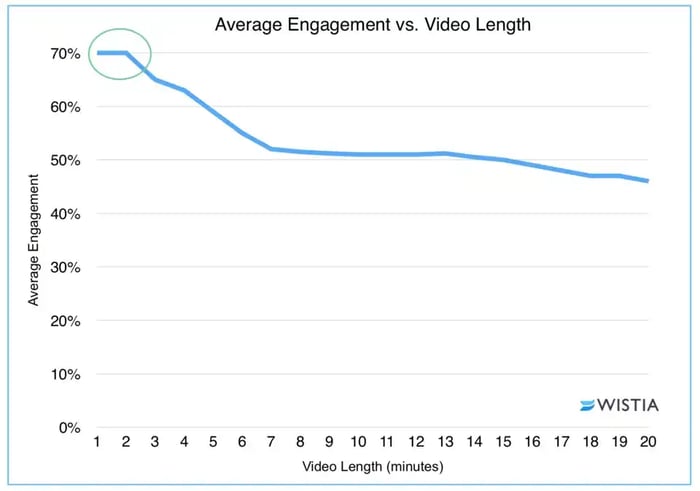
The longer you take to get to the point, the fewer people will stick around. But, if your video strategy needs to be long-form, don’t sweat it.
The second sweet spot that Wistia identified was 6-12 minutes:
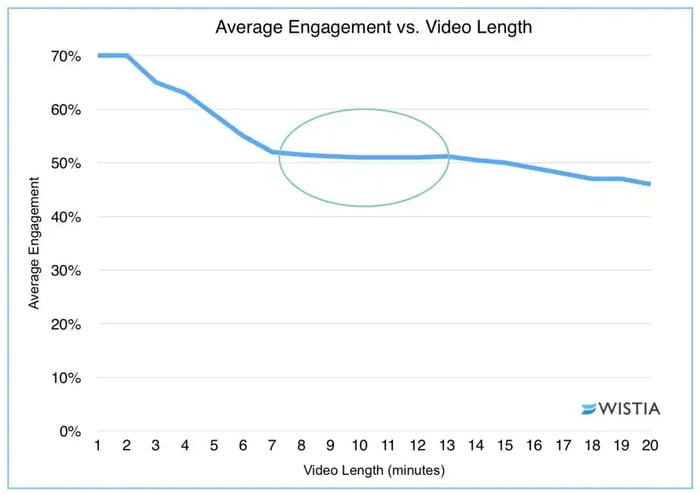
According to their research, if someone stays past six minutes, they more than likely will continue that engagement for a few more minutes.
Anything more than that and you aren’t going to see optimal results.
The best bet is to keep your video content within the 1-2 minute mark if you want to maximize your impact. An example of effective short landing page video is BuildFire’s home page explainer video:
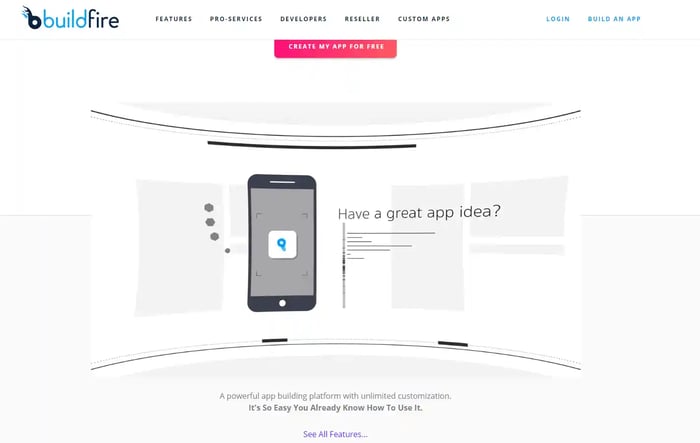
“Our current homepage conversion rate for signups is around 22%. It wouldn’t be that high without the explainer video.” - Ian Blain, Co-founder and CMO of BuildFire
They use a promo-style video explainer that lasts for 1:15 and sums up the business and value proposition. And they get straight to the point. They keep it short and sweet by explaining how users can benefit from their product.
Want to create a video that converts at a high rate? Follow the data. Keep your videos between the 1-2 minute mark for better conversion rates.
Optimize your video size and placement.
Everything makes a difference when it comes to video content. You can’t slap together a video and assume that conversions will roll in.
Even the video size, placement, and dimensions can have a big role in conversion rates.
And when it comes to your landing pages, you need to do anything you can to increase conversions. Your business depends on it.
Wistia conducted a study where they crawled 95,000 different pages to understand how size impacts conversion rates on landing pages. To start, they divided the typical landing page into seven distinct zones:
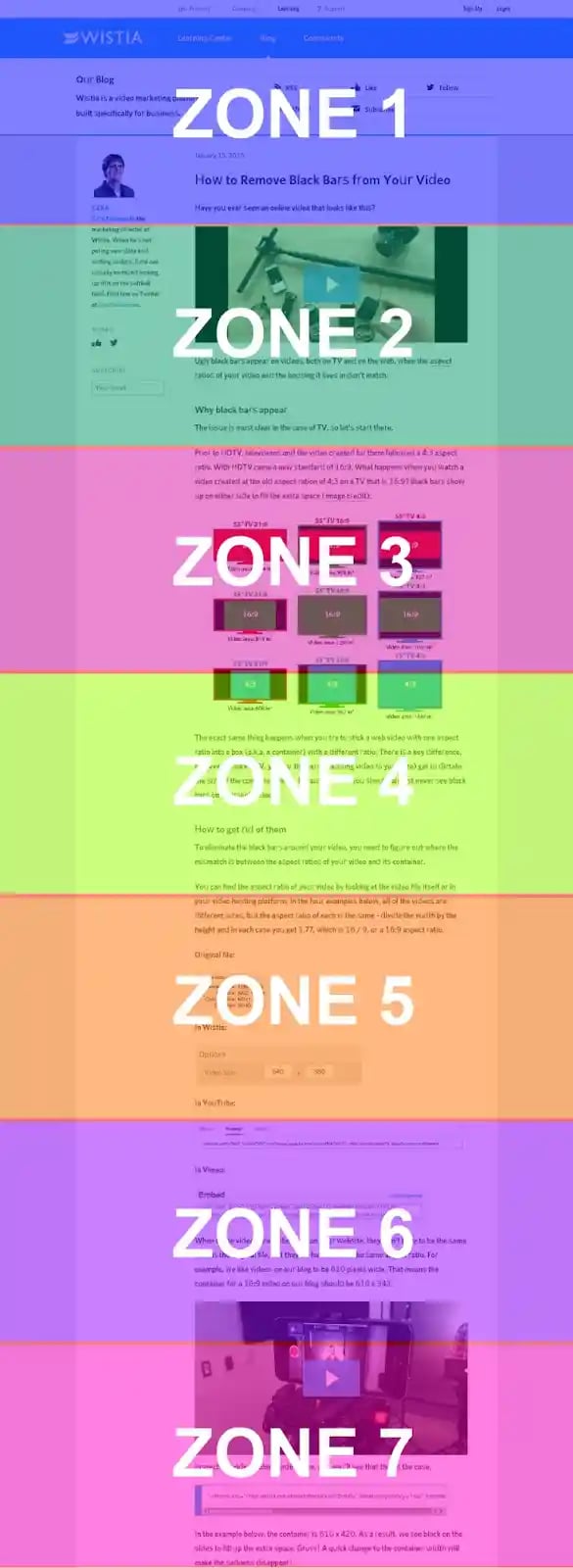
As you can expect, video content got more plays when it was higher in zones, or above the fold:

If you want more conversions, make sure to keep your video content in zones 1-3. That means above the fold or just before your page starts to get too long. For example, check out where BuildFire places their video content, in zone 3:

This helps to warm up visitors with basic introductory content on your landing page without overwhelming them. If you jump straight into a video without context, you might risk lower conversions.
Warm up your visits with a snappy headline and then get into the video content.
But that’s not all. Video height and width are big factors in play rates and conversions. According to Wistia, videos with a width of 401 to 600 pixels are going to be best for driving more plays:
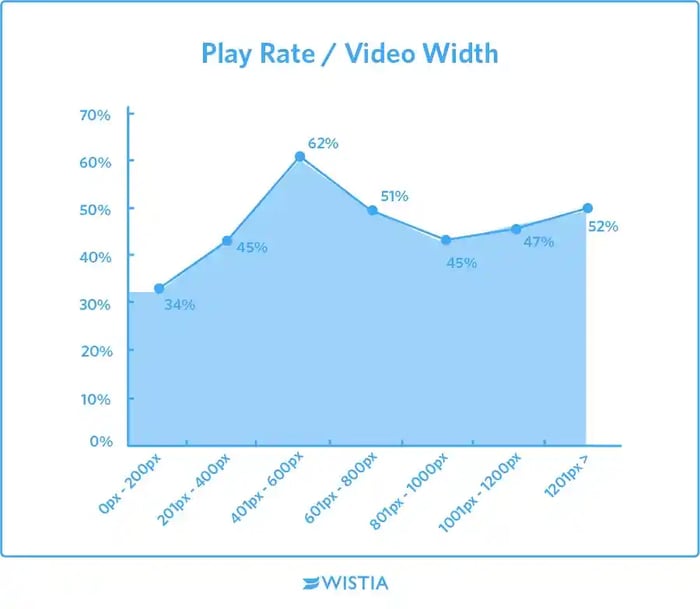
On top of that, the optimal video height is 301 to 450 pixels:
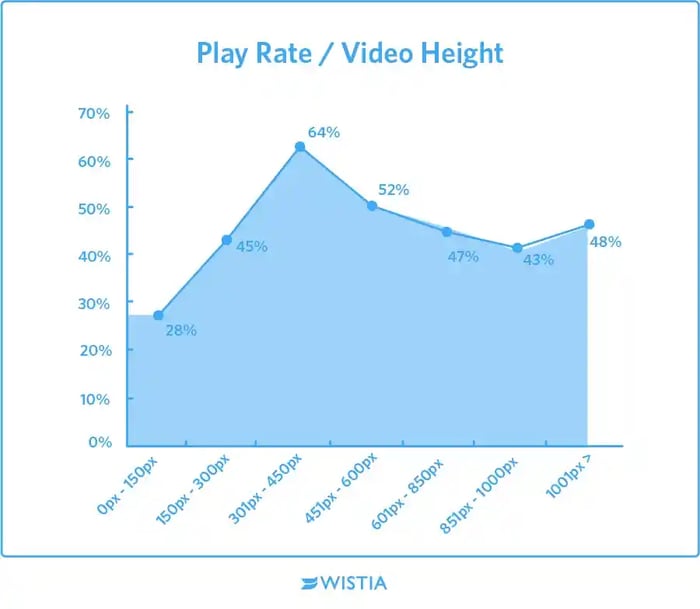
These are common dimensions that are great for producing video that doesn’t dominate your screen or appear too small to click.
Optimization is key to getting more plays. If you can get more plays, you have a great shot at getting higher conversion rates. To sum it all up, focus on these elements:
- Play your video in zones 1-3 on your landing page, ideally above the fold after you’ve provided context
- Use a video width of 401-600 pixels
- Use a video height of 301-450 pixels
How to produce a promo video with a limited budget.
Now that you know the key elements in a converting video, it’s time to create one on your own with a limited budget.
Keeping conversions in mind, you’ve got to create a short and sweet video. Here’s how to produce a promo video with a limited budget that is sure to convert.
1) Develop a compelling script.
The first step in producing any great promo video for cheap is coming up with your own script. Most marketers will hire a company right out of the gate to develop a video script, but to save money, you can complete this step within your own team.
You need a video script that resonates with your audience. Thankfully, you can often come up with a script based on your existing landing page.
For example, look at how BuildFire structures their landing page.
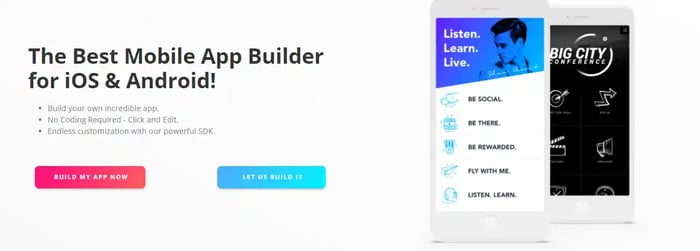
First, they use a compelling headline to generate some initial interest.
Next, they use social proof to back up their claims:
Now they show you exactly how any user can use their service for success:
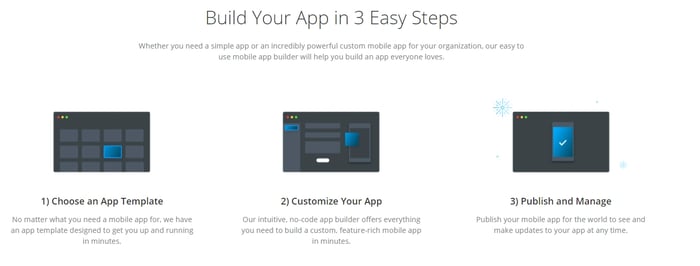
Then they tease it even further with specific features and benefits:
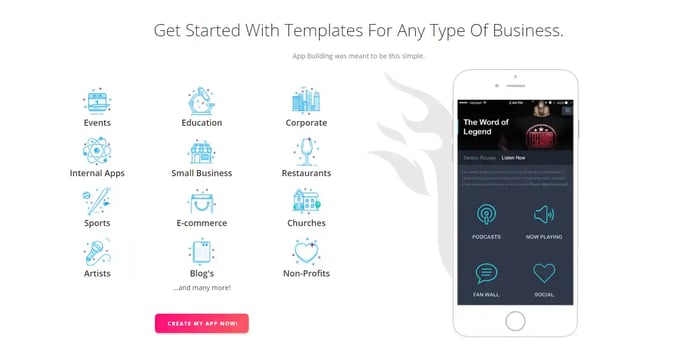
The entire landing page flows like a pre-written script, because it is. The keys to your first video are already hiding within your landing page.
To break it down, here are some of the key factors to include in your script:
- Use an intriguing opening line to capture attention.
- Use social proof to back up those claims.
- Show how easy it is to use your product.
- Show what your product does and what benefits it provides.
- Explain how the user derives value from it (more conversions, better sales, etc.).
2) Find the right style for your target market.
Next up, you need to figure out what style of video is best for your target market. For example, a video on a landing page for a GoPro is going to be vastly different from a SaaS product, right?
The GoPro video will show the product in use in real time, showing actual footage, rather than animated clips. The SaaS product video will likely show the application in use and animated shorts to add style and appeal to the video.
The key here is to understand your market and what they want to see. To get started, conduct some basic competitor research, or search for the top companies in your niche. For example, if you have a mobile app, you can search for the top applications of 2017:

Locate a few of them on the list and head to their site to scout the landing page for video-based content. You should easily be able to locate their product promo videos to see what content they feature:
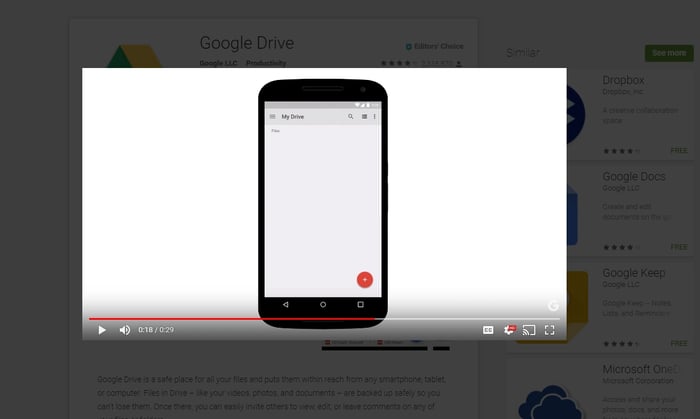
You can even copy their script style and video type.
The goal here is to get familiar with the most popular companies in your niche to create video that performs just as good if not better than theirs. Once you’ve done this, it’s time to get the video produced.
3) Produce it for cheap to minimize risk.
Creating compelling video content isn’t cheap. Agencies can cost thousands of dollars to produce a single video for your business. And when it comes to getting conversions, you need specificity.
But not when it comes at the risk of bankrupting your budget on a failing video. Minimizing risk is key when introducing a new medium to your landing pages or content marketing plan.
You can’t afford to invest thousands of dollars in something that doesn’t work. The goal here is to identify ways to produce it for cheap, allowing you to test the waters before diving in head first.
A great place to start is by heading to a freelance service like Fiverr, depending on your needs. If you need an animated-style video short for your landing page, Fiverr is your best bet for getting it done on a budget.

You can quickly find great video animators and production specialists for minimal amounts of money. Even five dollars can get you a well-done promo video.
If you can’t find a good production specialist on Fiverr, try locating one on UpWork. You can also post a job listing to have qualified freelancers apply to your job. If you prefer to make your own animated video, you can easily do that using Biteable.

It’s a free software online that allows you to create amazing animated promo videos and product explainers. They have tons of pre-crafted animation slides that you can drag and drop to create a fantastic promo video for your business.
If you have an animation-focused product that is online based, Biteable is a great starting place.
Video content doesn't have to be expensive.
As blogging becomes more saturated and the market gets crowded, marketers will find new ways to reach customers. It’s not always easy moving your budget into new mediums. Especially costly ones like video marketing.
But in this case, it’s necessary.
![→ Access Now: Video Marketing Starter Pack [Free Kit]](https://no-cache.hubspot.com/cta/default/53/8f27c677-d952-4663-8787-bf65c6a1ecf2.png)
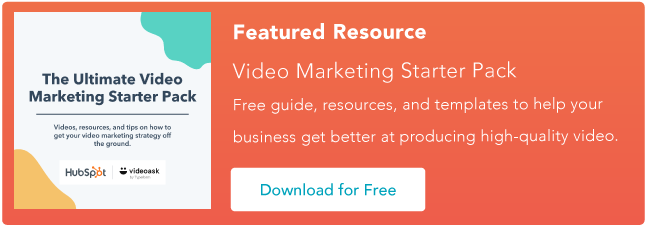

![How to Write a Video Script [Template + Video]](https://blog.hubspot.com/hubfs/video%20outline.png)




